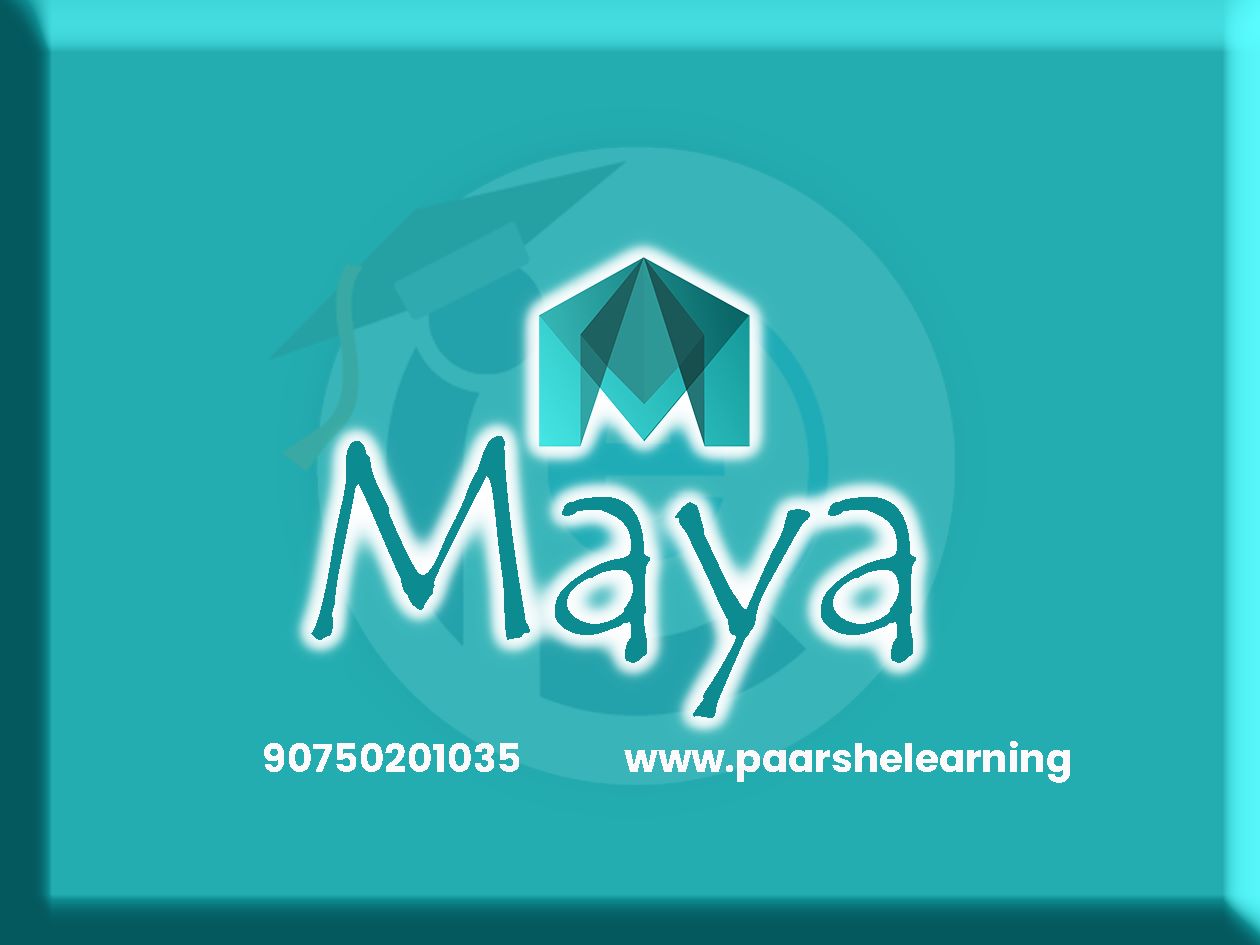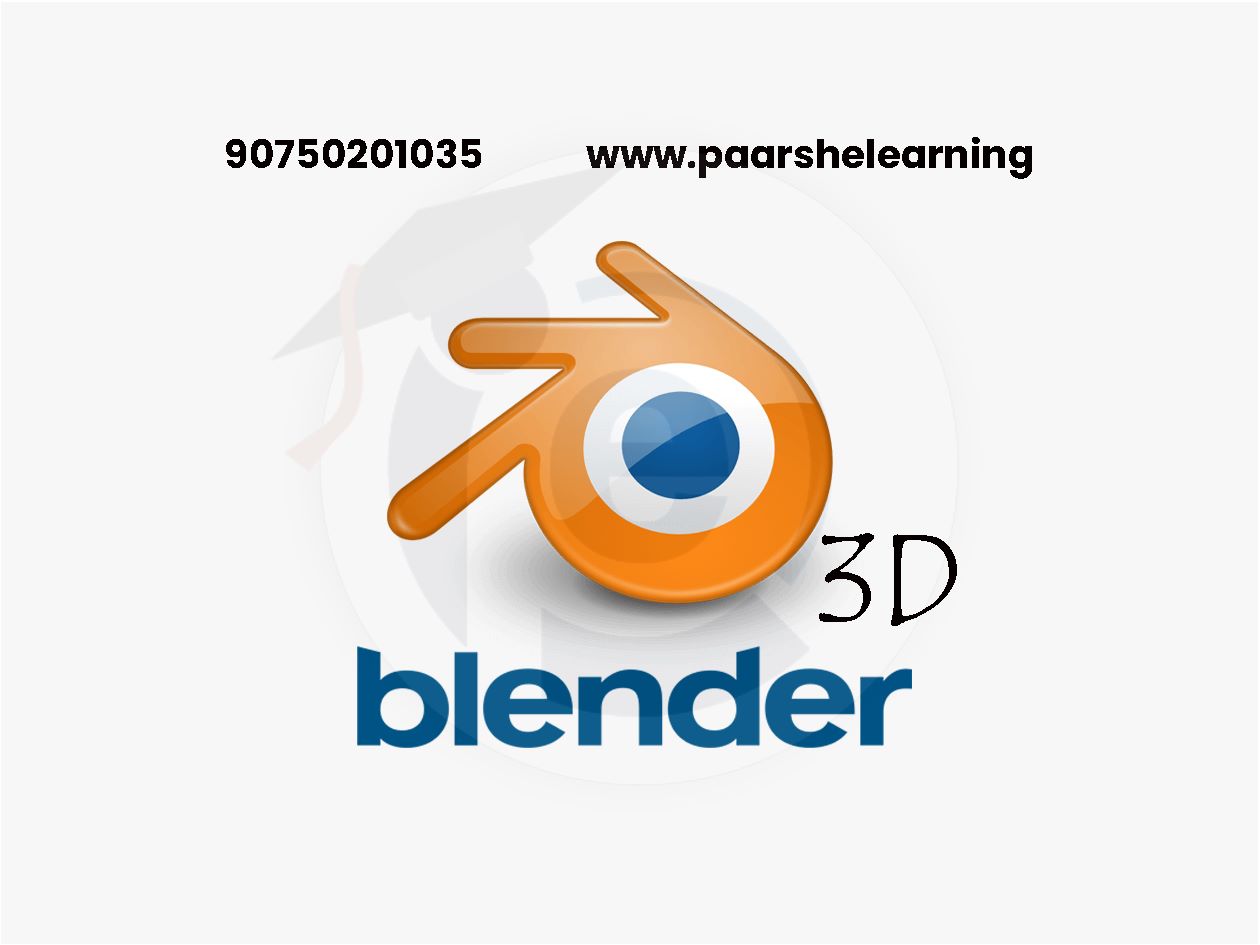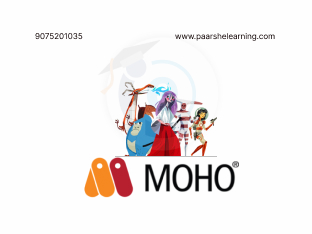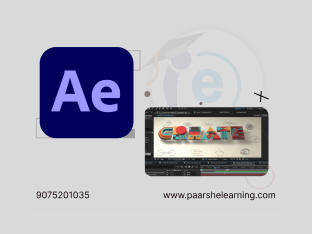- You will become comfortable using Autodesk Maya to model, texture, rig, animate, dynamics, light, and render
- Animate your 3D objects with keyframes
- Build and design your own 3D objects
- Rendering your projects for high quality playback
- Modeling, shading, texturing, lighting beautiful designs
- Rigging a 3D character for animation
- Simulating dynamic effects like water, cloth, and smoke
- You will know how to put together an entire 3D animated scene!
Maya
Course description
Maya is a professional 3D computer graphics software developed by Autodesk. It is widely used in the film, television, game development, and visual effects industries. Maya offers a comprehensive set of tools and features for modeling, animation, rendering, and simulation. Here's an overview of Maya's key components and capabilities:
-
3D Modeling: Maya provides a range of modeling tools for creating 3D objects and characters. You can use polygonal modeling to build and shape objects, NURBS modeling for more precise and smooth surfaces, or sculpting tools for organic and detailed models. Maya also offers advanced features such as procedural modeling, boolean operations, and retopology tools.
-
Animation: Maya is renowned for its powerful animation capabilities. You can animate characters, objects, and cameras using keyframes, curves, and procedural animation techniques. Maya provides a graph editor for precise control over animation curves, a timeline for managing and sequencing animations, and tools for character rigging and skeletal animation.
-
Dynamics and Simulations: Maya includes a wide range of simulation tools to create realistic physics-based effects. You can simulate cloth, hair, fur, fluids, particles, and rigid bodies. Maya's dynamics system allows for realistic interaction between objects, gravity, collisions, and other physical properties. You can also use Maya's nHair and nCloth systems to create realistic hair and cloth simulations.
-
Lighting and Rendering: Maya offers advanced lighting and rendering capabilities to create high-quality visuals. You can create and control different types of lights, apply shaders and materials, and set up global illumination and advanced rendering techniques. Maya's rendering options include the powerful Arnold renderer, as well as the option to use other popular third-party renderers.
-
Visual Effects: Maya includes a wide range of visual effects tools, allowing you to create complex effects and simulations. You can create fire, smoke, explosions, and other particle effects using Maya's particle system. Maya's node-based procedural effects editor, called Bifrost, enables the creation of custom effects and simulations.
-
Scripting and Customization: Maya provides a robust scripting environment using Python and MEL (Maya Embedded Language). You can automate tasks, create custom tools, and extend Maya's functionality using scripts. Maya also supports the development of plugins and custom shaders, allowing for extensive customization and integration with external tools and pipelines.
-
Integration with Other Software: Maya integrates well with other software commonly used in the industry. It supports interoperability with other Autodesk products like 3ds Max and Mudbox. Maya also provides import and export options for various file formats, allowing for seamless collaboration with other software and artists.
What you will learn from this course?
This course includes!
- Daily Live session
- A recorded session with problem-solving material
- Access on Mobile and TV
- Certificate of completion
- Recommendation Letter
- 100% Job Placement
This course is for
- We designed this course for complete beginners who want to get started with Autodesk Maya.
- We designed this course for anyone that wants to learn 3D animation, and the tools used by professional animators in the film industry.
- We designed this course for beginner Autodesk Maya users who want to take their skills to a more advanced next level.
- etc...
Prerequisites for this course
- You should have Autodesk Maya to follow along with the course
- Autodesk provides a free 1-year educational version and 30-day free trial of Maya from their website
- Start their career in animation with MAYA
- etc...
Maya 3d Syllabus
-
Maya Modelling
~ Creating primitive objects ~ Moving Objects in the 3D Space ~ Maya View Tools ~ Layouts, Saved Layouts ~ Channel Box and Manipulators ~ Grouping and Parenting ~ Spline Modelling ~ About Nurbs (Non-uniform rational B-spline) ~ Creating Curve and Surfaces ~ Attaching and closing Surfaces ~ Duplicating curves ~ Lofting and revolving surfaces ~ Procedural Modeling ~ Create complex object scenes using scripts as an alternative to GUI–based tools
-
Invigorator
~ Fast work of importing Adobe Illustrator files into ~ Maya for text and Logo treatments.
-
Rendering Overview
~ What is rendering ~ How Maya renders ~ Shader Networks ~ Shading Groups ~ Materials ~ Lights ~ Maya architecture ~ Nodes and Attributes ~ HyperGraph ~ IPR (Interactive Photorealistic Rendering)
-
Lighting
~Type of lights – usage of each, techniques for each ~ Light Linking ~ New linking to Objects (and sets) workflow ~ Reason for light linking – matching live footage lighting ~ Light attributes – What you’re adjusting and why – show manipulators ~ Light Fog ~ Intensity Curves
-
Shadows
~ Depth map ~What ~When and Why to use ~ Reuse / Share depth maps ~ Raytraced ~ What, When and why to use ~ Shadow Techniques (For realism and Optimization) ~ Adding hard or soft shadows to a scene ~ Shafts of Light – light fog ~ Trouble – shooting section for shadow problems
-
Motion Blur
-
Optifx Techniques And Tips
~Occlusion – as applies to light glow ~ Auto–exposure – as applies to Shader Glow
-
Rendering Performance
~Selective Ray tracing ~Multithreaded tile-based batch renderer concepts ~Renderer
-
General Animation
~ Powerful Keyframing Tools ~Keyframing ~First Cut, copy, and paste animated objects into the timeline ~Animation playblast for rapid review of complex scenes ~ Path Animation ~Animate an object along a curve or surface Edit path or other animation parameters during playback; ~ Set Driven Key ~ Establish Relationships where one action automatically drives another ~ Dope sheet ~ Rapid and intuitive global editing of keyframe timing ~Channel Box ~ Quickly edit an Object’s attributes, one or more fields at a time ~ Graph Editor ~ Precise Controlling on animated parameter changes over time
-
Generalized Constraints
~ Comprehensive assortment of constraints
-
Maya Fusion Le
~ for image file translations, and getting content to and from videotape
-
Organic Modeling
~Rebuilding surfaces ~Editing Control Vertices (CV) ~ NURBS Boolean ~ Apply subtraction, intersect, and union Operations across multiple NURBS surfaces ~ Round ~ Create rounded bevels of constant radius on any NURBS object ~ Surface Offset ~ Create new surfaces, offset from the original specific value. ~ Working with trimmed or untrimmed surfaces ~ Enhanced Extrude ~ Scale and Rotation Control for extruding a curve along a path ~ Square ~ Create NURBS from up to 4 curves ~ Global Stitching ~ Stitching multiple adjoining surfaces together with full continuity ~ Subdivision of Surfaces
-
Maya Artisan
~ Artisan’s natural brush interface to interactivity sculpt and Paint attributes on polygons and NURBS or add objects to surfaces
-
Dependency Graph
~ Nodes, Attributes ~ Connections ~ Hierarchies and Dependencies ~ Shading group nodes
-
Deformation Tools
~ Lattices ~ Sculpt Object ~ Wires
-
Dynamics
~ Rigid Body Dynamics ~ Realistic high-speed simulation of multiple rigid objects ~ Dynamic Constraints such as nails, hinges, barriers, pins and springs ~ Soft Body Dynamics ~ Simulation of flexible objects ~ Creation of secondary motion effects like muscle jiggles, floppy hats etc ~ Powerful Spring architecture ~ Extensible Integrated Particle System ~ Powerful integrated particle system with expression-based control over particle attributes, motion, and dynamics Rotation, scaling, translation, or parenting ~ Manipulating particles, fields, and emitters ~ Textured control of particle emission ~ Geometry instancing on single or cycling geometry onto any particle ~ Particle collision ~ Particle Time Control ~ Precise keyframe control by adjusting the base timing for each individual particle object effect ~ Fields ~ Applying fields like gravity, vortex, air, turbulence, etc. ~ Custom fields via extensive dynamics API ~ ClipFX ~ Library of ready-made effects like fire, curve and surface flow, shatter, fireworks, and lighting
-
Software Particle Rendering
-
Hardware Rendering
-
Maya Paint Effects Using 3d Studio Paint
-
~ Powerful Painting Techniques ~ Create jungles of trees and plants ~ Flowing hair ~ Flickering flames ~ And many more ~ Paint Effects brushes ~ Natural Media Brushes ~ Effects Brushes ~ Brush Attributes ~ Rendering Paint Effects
-
-
Character Animation
~ Pose Based Characters ~ Skeletons and Inverse Kinematics (IK) ~ Skinning ~ Advanced layered Deformations ~ Integrated sound Synchronization ~ Integrated Motion Capture Concepts
-
Maya Cloth
~ Create any Fashion in any Fabric ~ Animate any Fabric object ~ Unique Solver ~ Integration with Maya
-
Maya Fur
~ Artisan User Interface ~ Using Artisan to paint fur ~ Using the Artisan brush to comb the hair ~ Multiple Fur Type ~ Using Multiple fur types ~ Assigning Attributes to fur ~ Applying Texture on the fur ~ Animating Fur ~ Fur Rendering
-
Match Moving Using Maya Live
~ Match 3D Elements with Live action shots ~ Extract an exact duplicate of the original camera from live-action footage to precisely match the original motion and seamlessly blend live-action and CG elements ~ Camera movement support 2D tracking ~ Tolerant of noisy tracking observations ~ Bi-directional tracking ~ Different Solvers for Different Problems ~ Interactive root frame solver for complete interaction with the camera extraction process ~ Automated comprehensive solver with exclusive Inverse Computer Graphics ~ Reconstructing live-action elements as 3D Geometry ~ Placing Maya 3D Locators in the 3D positions to easily construct scene geometry and precisely position 3D objects relative to the live-action scene.





